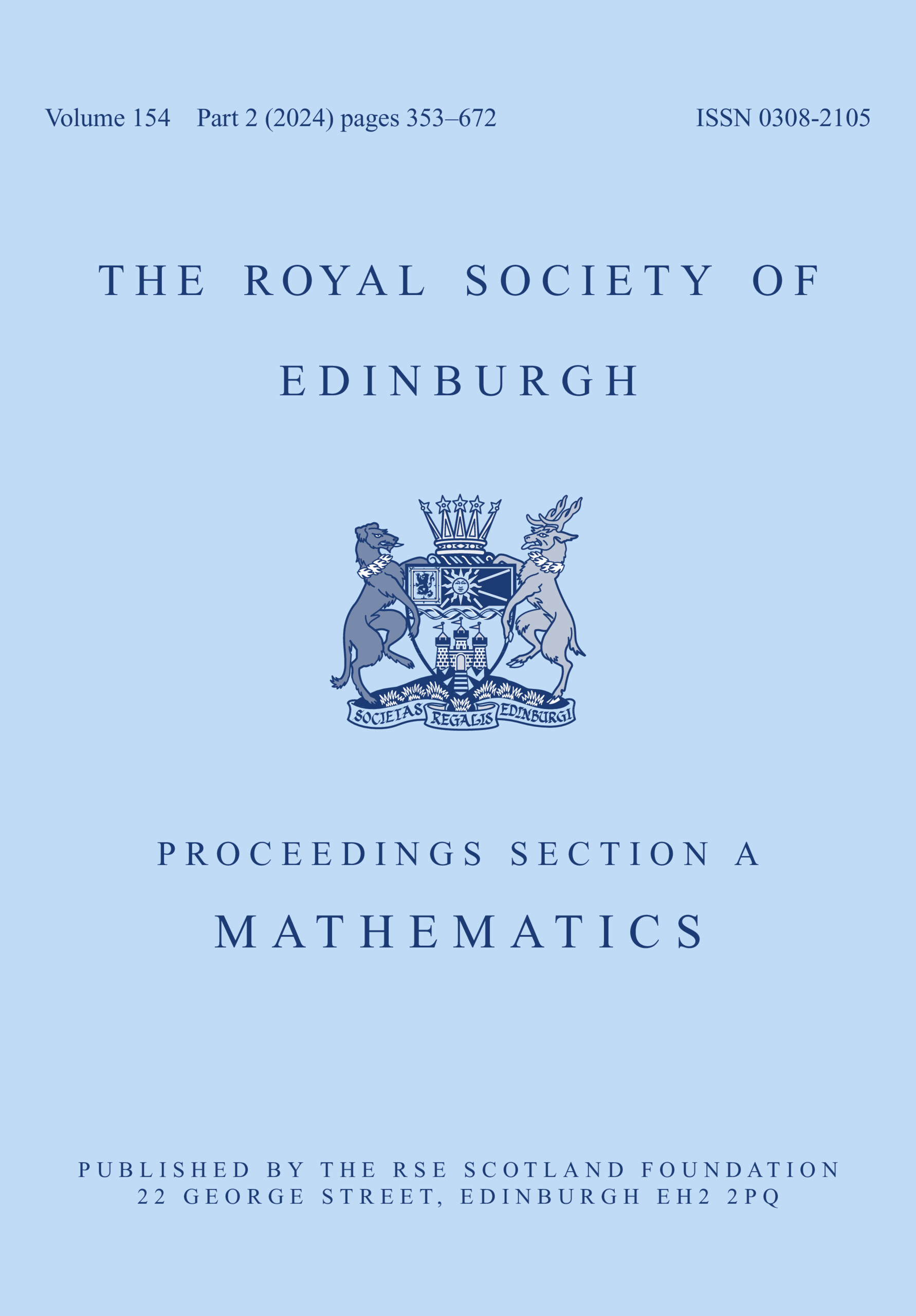Article contents
Self-similar solutions for diffusion in semiconductors
Published online by Cambridge University Press: 14 November 2011
Abstract
We study the development of concentration profiles in a semi-infinite slab of semiconductor material after impurities have been implanted uniformly through the slab, under the assumption that, at the face of the slab, no impurities can pass and the vacancy concentration is kept at its equilibrium value. It is shown that profiles of self-similar form exist, and their qualitative shape, as well as their asymptotic properties far from the face of the slab, are determined.
- Type
- Research Article
- Information
- Proceedings of the Royal Society of Edinburgh Section A: Mathematics , Volume 124 , Issue 3 , 1994 , pp. 473 - 506
- Copyright
- Copyright © Royal Society of Edinburgh 1994
References
1Coddington, E. A. and Levinson, N.. Theory of ordinary differential equations (New York: McGraw Hill, 1955).Google Scholar
2Hearne, M. T.. Diffusion models for the doping of semi-conductor crystals (PhD Thesis, Nottingham University, England, 1988).Google Scholar
3King, J. R.. Mathematical analysis of a model for substitutional diffusion. Proc. Roy. Soc. London Ser. A. 430 (1990), 377–404.Google Scholar
4McLeod, J. B. and Serrin, J.. The existence of similar solutions for some laminar boundary layer problems. Arch. Rational Mech. Anal. 31 (1968), 288–303.CrossRefGoogle Scholar
5Peletier, L. A. and Troy, W. C.. Self-similar solutions for infiltration of dopant into semiconductors. Arch. Rational Mech. Anal. 116 (1991), 71–89.CrossRefGoogle Scholar
6Zahari, M. D. and Tuck, B.. Effect of vacancy reduction on diffusion in semiconductors. J. Phys. D 15 (1982), 1741–1750.CrossRefGoogle Scholar
- 1
- Cited by


